Macroeconomics is a Greek word coming from the prefix “Makro” that means large. It deals with the performance and decision making in the economy. The structure of an economy comes under macroeconomics. Macroeconomics studies economy wide events such as production, employment level, price mechanism. The objective of macroeconomics is to investigate principles to expand production, achieve full employment. Go though the blog to know everything about WHAT IS MACROECONOMICS – LEARN IN 10 MINUTES.

Macro-economists make use of measures like GDP, consumer price index to analyze economic decisions. The primary areas of macroeconomics research are business cycle and economic growth. There are many schools of thought concerning macroeconomics. The main school of thoughts are Classical and Keynesian.
Macroeconomics Definition – WHAT IS MACROECONOMICS – LEARN IN 10 MINUTES
Macroeconomics mainly deals with the functioning of an economy on a large scale. In addition it studies the operation of a market in a large scale in an economy. Broader concepts like national output, inflation, economic growth etc. are all components of macroeconomics. [Source- Investopedia]
John M Keynes developed modern form of macroeconomics in the 1930s. Macroeconomics looks at the broader scenario of the economy. On the other hand, the specific details are looked by other branches of economics. Economist mostly develop relations between the factors that are influencing economy.
There are numerous benefits of studying macroeconomics. Macroeconomic theories help businessmen and investors to take key decisions. It is helpful to understand business cycles and economic trends. Production oriented decisions are taken following the economic trends of an economy.
History of Macroeconomics – WHAT IS MACROECONOMICS – LEARN IN 10 MINUTES
The term “macroeconomics” came in the 1930s but the concepts like economic growth, inflation are quite old. These key concepts were focus studies from a much longer time. During the early times, it was Adam Smith and John Stuart Mill who developed the concepts of macroeconomics. In the modern times, it started with John Maynard Keynes from his book “The General Theory of Employment, Interest and Money” in the year 1936. In his book, Keynes explained the reason behind the fall of markets and unemployment after the Great Depression of 1936. There was no difference between macro and microeconomics before Keynes.
Macroeconomics vs Microeconomics – WHAT IS MACROECONOMICS – LEARN IN 10 MINUTES
Macroeconomics is totally different from microeconomics. Both the parts of economics focuses on different concepts altogether. Macroeconomics focuses on economy as a whole while microeconomics focuses of the individual concepts. At the same time, there is a connection between micro and macroeconomics. An example, the unemployment level have an impact on the aggregate supply of workers in the economy.
Microeconomics focuses on smaller factors that will affect the decisions and choices of individuals. Macroeconomics deals with the problems in hand. It deals with the effects that is caused due to a microeconomic variable. For example, If the behavior of customers change for a product, the price level in the economy is hampered.
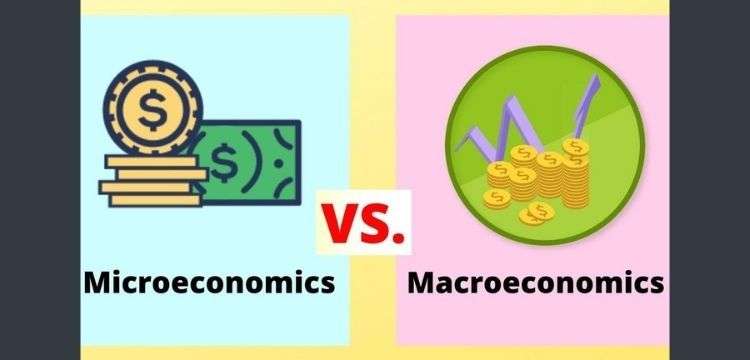
Macroeconomics deal with decision making of all the people in the economy as a whole. But microeconomics deal with decision making of an individual present in the economy. Macroeconomics forms a platform to study the economy while keeping all the microeconomic factors in mind.
Purpose of Macroeconomic Policy – WHAT IS MACROECONOMICS – LEARN IN 10 MINUTES
Macroeconomics is concerned with the operation of an economy. The operation of an economy takes many factors into consideration. The realm of macroeconomics is to study all these factors individually. These factors form the base of decision-making process in an economy. The goal of macroeconomic policy is to provide for a stable environment in order to run all the economic decisions. A stable economic environment helps all the economic players to take part in the process. This also helps the businessmen to take key decisions. Production lines also work under macroeconomic decisions. The market forces play a key role in influencing the decision-making process in an economy.
It is commonly believed that micro and macroeconomics go hand in hand. The individual perspectives also help to decide on various macroeconomic variables. The macroeconomic policies determine stability in an economy. Various decisions on output, inflation targeting, national income prove essential for the success in the economy.
The purpose of studying macroeconomics is
- To understand how an economy function
- Formulation of the economic policies
- Understanding the economic fluctuations and their control
- Inflation targeting
- Understand the causes of Deflation
- It helps to study National Income
- Macroeconomics deal with economic development as a whole
- Study material welfare.
Functioning of an economy
The above all importance of studying macroeconomics is that is helps to understand the functioning of the economy as a whole. It helps to understand the key relations between variables that enable the economy to function.
Government decisions also affect the economic policies. These policies have a direct effect on the economy. Macroeconomic variables help to understand the cause-and-effect relation between the factors.
Formulation of Economic Policies
The formulation of economic policies is the most important task of macroeconomics. Important decisions are taken by keeping the factors of macroeconomics in place. Various government only deal with a large group of people that by itself is a macroeconomic study. Dealing with business houses is also a macroeconomic principle.
Many economic policies in advanced economies are framed by the government keeping in mind the business houses. Their decisions are also important as they are the investors. Investors help in circulating money in the economy. Therefore economic decisions on inflation or deflation are taken keeping in mind the investors.
Economic Fluctuations – WHAT IS MACROECONOMICS – LEARN IN 10 MINUTES
There are many reasons of economic fluctuations. The primary reason is price change. Price change can be due to many factors. The most important reason is increase input cost. Another reason is increase in fixed cost. When such occasions arise in the economy it causes inflation, deflation, unemployment rate increases.
Business decisions are one of the important factors causing economic fluctuations. The production lines are hampered due to economic fluctuations in an economy.
Inflation Targeting
Many economists suggest, some amount of inflation is good for the economy. But the question arise that by how much? Many governments have taken key economic decisions by targeting inflation. Economists suggest that an inflation between the rate of 4% to 6% is good for the economy.
Deflation – WHAT IS MACROECONOMICS – LEARN IN 10 MINUTES
Many government and economic policies change when there is deflation in the economy. Deflation is the fall in the price level in the economy. Moreover greater fall in the price level can be disastrous to the economy. It can lead to economic depression if deflation continues for a longer period of time. Many businesses close due to deflation. Deflation is caused due to reduction in money supply, increase in the value of money.
Study of National Income
The purpose of macroeconomics is to study the macroeconomic variables. National income is the study of income of all the people in an economy during a period of time. Whereas, national income is also an important part of macroeconomic variable. Government decisions can cause a rise or fall in national income. The study of national income is very important. Because it helps to understand the level of economic growth.
Study of Economic Development
The study of macroeconomics has been diverse in the modern days. It not only focuses on the development of the developed or developing countries. But also focuses on the development of the under-developed countries (UDC) as well. Because the development of the UDC’s is a cause of major concern.
Macroeconomics point out the major challenges that has to be addressed while formulating policies for the UDC’s. Additionally, it is a major challenge for all the economies to counter the growing distress. It studies the difference in the standards of living of a developed nation and an UDC.
Study of Material Welfare
Macroeconomics studies the nature and size of the material welfare of nations. The objective of studying economics is to study welfare of the people. Because the main reason is to make policies for them to increase their standard of living. Welfare of the entire society is important. This is the primary target of economics.
Objectives of Macroeconomics – WHAT IS MACROECONOMICS – LEARN IN 10 MINUTES
Macroeconomics goals are quite different from that of microeconomics. Microeconomics focuses on efficiency and equity. Macroeconomics focuses on different aspects of the economy. Besides, macroeconomics looks into the broader picture of the economy. The main objectives of macroeconomics are:
- Full employment
- Price Stability
- Economic Growth
- Social Objectives
- Balance of Payments equilibrium and exchange rate stability
Full Employment
The success of the government lies in determining full employment and stability in price level. These indicators are important to measure the health of an economy. In other words, full employment can only be achieved if all the indicators of an economy is achieved. Economists have suggested many measures in an economy to target full employment. But full employment is still not been achieved in any economy.
According to Keynes full employment is not possible to achieve. The level of full employment is now treated as high level of employment. Even if 3 to 4 percent of the people are unemployed in the economy then also it is treated as full employment.
Price Stability – WHAT IS MACROECONOMICS – LEARN IN 10 MINUTES
After the Keynesian thought the primary objective of macroeconomics is that of price stability. Price stability is not changing of price for a long period of time. On the other hand a marginal rise of price is always welcome. It leads to inflation. But a high price rise is not good for the economy. This helps in attaining steady growth in the economy.
Economic Growth – WHAT IS MACROECONOMICS – LEARN IN 10 MINUTES
Economic growth in an economy is not steady. It depends on various sources. The sources are growth of labor force, capital formation and technological progress. If all three attributes grows then you can say that there is economic growth in an economy. The most common way to measure economic growth is by GDP.
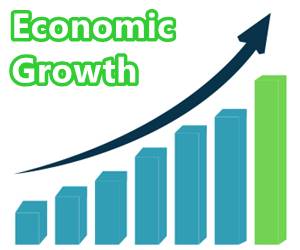
It is important for an economy to experience longer period of economic growth. Because this will increase the quality of life. As a result the direct impact will fall on the overall development of the economy. There is a conflict between economic growth and price stability. Economists suggest that the government should focus on economic growth with reasonable price stability. [Source- Economics Help]
Social Objectives – WHAT IS MACROECONOMICS – LEARN IN 10 MINUTES
The aim of macroeconomic policy is to attain social welfare. Social welfare can be achieved by proper distribution of resources. The distribution of resources mean proper income distribution. Because to ensure social justice proper distribution of resources is very important.
Balance of Payments Equilibrium and Exchange rate Stability
The aim of every country is to maintain a positive balance of trade. A positive balance of trade is when exports are greater than the imports. This helps the economy earn foreign revenue. At the same time it is also important to maintain a balance in the exchange rate. The foreign exchange rate has to be stable. This helps in bringing an external stability in price of different commodities.
Components of Macroeconomics – WHAT IS MACROECONOMICS – LEARN IN 10 MINUTES
Macroeconomics is vast field of study. Besides, some of the vital components of macroeconomics are economic output, gross domestic product, employment and inflation. These four components are very important from the perspective of an economy. There is another factor that also influence the macroeconomic variable. That factor is business cycles.
Economic Output – WHAT IS MACROECONOMICS – LEARN IN 10 MINUTES
Output is the best measure of an economy. Because when economic output increases economic growth also increases. Economic growth can be measured in terms of gross domestic product (GDP). Therefore, an increase in real GDP is an increase in economic growth. GDP is the total value of the products produced in an economy usually in one year. Therefore if GDP increases it also signifies the growth in economic output.
The two main sources of growth are increase in factors of production and increase in productivity of these factors of production. When there is an increase in factor of production in an economy it experiences growth. The four factors of production are land, labor, capital and entrepreneurship. When amount of land, labor increases in the economy the growth rate will also increase.
The other factor was the productivity of the factors of production. When productivity of land increases then it will boost agriculture. The growth of agricultural crops will boost national income in the economy. When productivity of labor increases then production of goods and services also increase.
Adam Smith in his book “The Wealth of Nations” pointed out the causes of economic growth:
Labor Force
The efficiency and productivity of labor force is very important for the growth of the economy. Similarly, economic growth of an economy totally depends upon the labor force. GDP is an indicator of economic growth. And GDP is the total value of goods and services produced in an economy in one year. Therefore if more goods are produced then the labor is productive. As a result GDP will be high. But if the goods produced are less then it indicates that the labor force is not productive. Therefore the GDP will be less.
Degree of Labor Specialization
Specialization of labor increases the efficiency and productivity of the labor. When efficiency of labor increases then production of goods and services will increase. This will automatically increase the real GDP in the economy. The degree of specialization of labor force is very important. Because it initiates the growth process in the economy
Amount of Capital Stock
The amount of capital varies from business to business. And also from economy to economy. Because a more developed economy will have more capital resources as compared to an underdeveloped economy. When capital stock is high then investments are possible. With investments come production. Therefore to increase production, investments are made.
Level of Technology
The level of technology used in the production process drastically changes the output level in an economy. Better research and development in the field of technology will yield better returns for the economy. This will also increase the efficiency of production. But an outdated technology will degrade the process of production. The results will be bad for the economy. With efficient technology the production process also gets better. In the field of technology innovation is very important.
• Suggested Blog: Learn with Mentyor’s Accounting Assignment Help and Finance Assignment Help
Gross Domestic Product – WHAT IS MACROECONOMICS – LEARN IN 10 MINUTES
Gross Domestic Product is the value of the final goods and services that are produced in the economy in one year. GDP is the fundamental indicator of economic growth. It is an important attribute of macroeconomics. Gross domestic product helps in identifying the total growth process of the economy. [Source- The Balance]
Gross domestic product can be mathematically calculated.
GDP = C + I + G + NX
C= Consumption expenditure
I= Investment expenditure
G= Government spending
NX= Net Exports-Imports
GDP is calculated on the basis of per capita. Per capita GDP is GDP per person. It is a measure of country’s standard of living. Likewise, a country with higher GDP per capita will have a better standard of living.
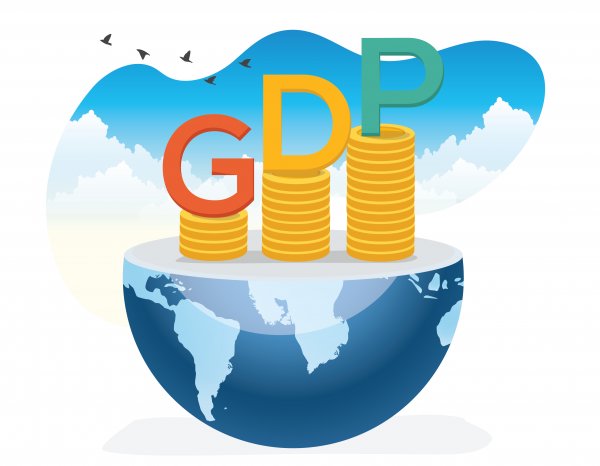
There are few methods to measure GDP in an economy. First is the income method. Second is the output method. Third is the expenditure method.
Income Method
GDP is measured by adding the total income earned by the factors of production. It is calculated as
GDP= GDP at factor cost + Taxes – Subsidies
Output Method
GDP is the market value of all goods and services produced in the economy. In this case, GDP is measured at constant prices.
GDP= Real GDP (Constant Prices) – Tax + Subsidies
Expenditure Method
In this case, GDP is calculated by the expenditure incurred on purchasing the final goods and services in the economy.
GDP= C + I + G + NX
NX for this case is Net Exports – Imports
Employment – WHAT IS MACROECONOMICS – LEARN IN 10 MINUTES
Employment consist of total working force in an economy. It involves the total work force who are deployed behind the production lines. It is the state of being employed i.e. earning wages for livelihood. Unemployment refers to the individuals those who are searching for a job but unable to find one. Employment helps to increase the per capita income. When per capita income increases the national income of the economy also increase.
Employment helps the economy to grow. When there is employment in the economy it signifies the production lines are also functioning. The proper functioning of the production lines helps the economy to prosper.
The total workforce in the economy helps in the production lines. Similarly to increase production of the goods and services in an economy, we require more of the factors of production. The factors of production are land, labor, capital and entrepreneur. All these contribute to the wellbeing of the economy. [Source- Economics Online]
Categories of Employment
According to the labor force survey, there are four categories of employment.
Employees
They are the regular workers in an organization. The employees have a structured wage which is decided by the organization. They may be working full time or part time.
Self-employed
They do not work for a specific employer. As a result they are not paid a consistent wage. Their source of income is by a contract that they have with a trade or business activity.
Unpaid Family Workers
They are the family members themselves. The service given through household chores are not valued monetarily. But their work is also important too. The management of a company is taken care of managers. At the same time, the management of a house is also taken care by the unpaid family workers.
Participants in government funded training schemes
The government funded training schemes hire professionals to work for the enterprises. They are social workers, or agents who work for the government. This helps the society to prosper.
Employment Rate
Employment rate is defined as the proportion of the population who are in the working age have some type of employment. The working age group is also mentioned by the labor force survey. Age group for men is in between 16-64. The working age group of women is in between 16-59.
During the great recession of 2008 that the employment rate fell and it continued to fall till the year 2009. When employment rate falls, economic growth is also hampered. From 2012, economic growth started rising.
The focus of people has shifted more towards the service sector. The employment level in the service sector is continuously rising because of globalization. There is little fall in employment rate in the agricultural sector because of urban migration. And in the secondary sector that is the industries, as a result of artificial intelligence and capital employed the vacancies are drying up.
• Suggested Blog: Learn what is Human Resource Management in 5 minutes
Inflation – WHAT IS MACROECONOMICS – LEARN IN 10 MINUTES
Inflation is a major concept in macroeconomics. It simply means the rise in the general price level in the economy. Economists suggest some amount of inflation is good for an economy. But when inflation keeps on increasing it causes economic problems. Inflation targeting has become a key concept in economics. The target inflation rate is in between 4% to 6%. It increases the growth rate in an economy.
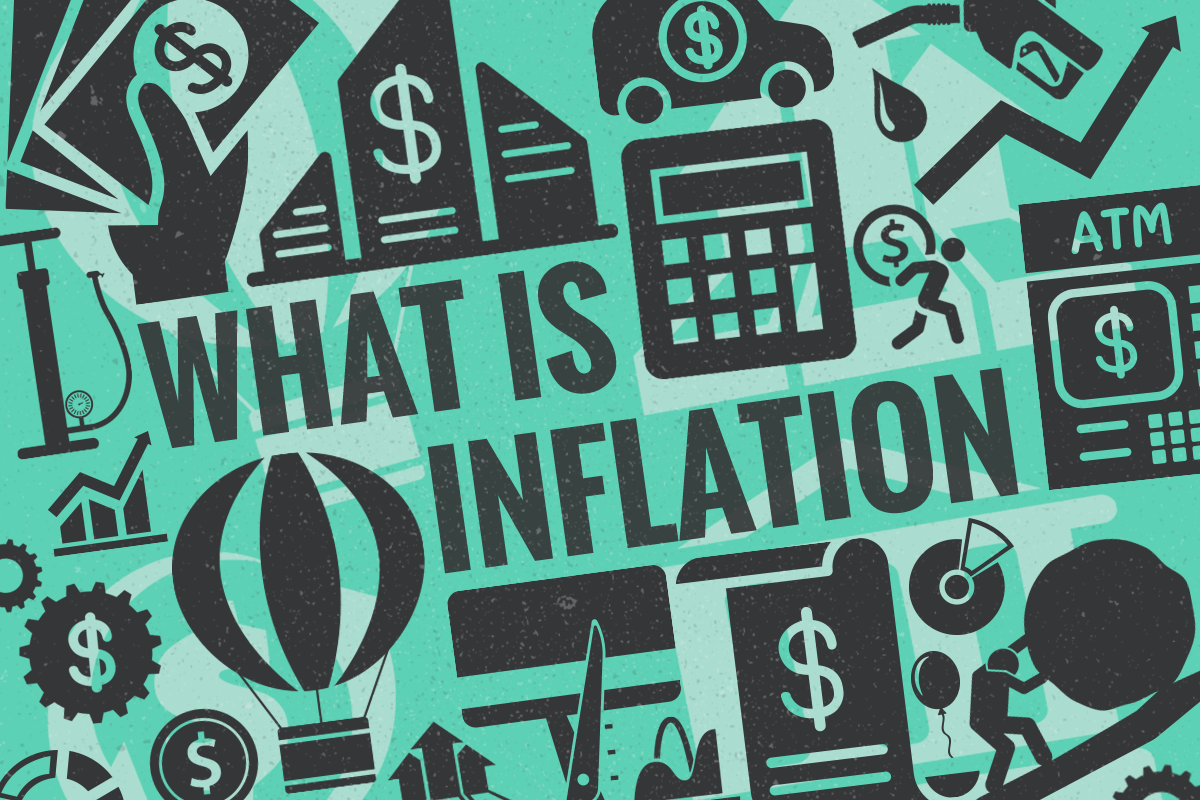
Types of inflation
Inflation are of mainly three types depending on their rate of increase in price level.
Creeping Inflation
Creeping inflation is also called mild inflation in macroeconomics. It is not dangerous for the economy where the level of income is also increasing. Mild inflation is good for the economy.
Galloping Inflation
Mild inflation leads to galloping inflation. The unchecked mild inflation causes galloping inflation. In this case, price level in the economy increases at a faster rate. It has an adverse effect on investments and savings in the economy.
Hyper Inflation
Hyperinflation is the unprecedented rise in the price level. When prices of goods and services rise and the rise in price is unable to control by authorities then that situation is hyperinflation.
Causes of inflation
The primary cause of inflation are the demand and supply side factors. When demand increases in an economy this leads the price to increase. When price increases it will cause inflation in an economy. Inflation caused when supply of goods and services fall short. When there is shortage of goods in an economy then the prices will rise.
Demand Pull Inflation
Demand pull inflation is caused by the demand side factors. It leads to a rightward shift of the demand curve. This means that due to an increase in demand the prices of goods and services have increased.
Factors that cause the inflation from the demand side are the increase in income, fall in production cost etc.
Cost Push Inflation
Inflation caused by the supple side factors is called cost push inflation. This leads to a leftward shift of the supply curve. Leftward shift means supply is decreasing. When supply decreases the price of commodities rise. The factors causing the rise in price from the supply side are decrease in price level, reduction in fixed cost etc.
Who benefits from inflation?
Inflation does not affect each and every person in the same way. Some people do gain from inflation while some are the losers. For example debtors gain from inflation. Because the purchasing power has decreased due to inflation for the creditors. Even during the period of inflation, house owners benefit from inflation. Because of capital appreciation, the price of houses were rising during inflation. Now since it has been already purchased house owners will not feel the pinch of the increased price level.
Effects of Inflation
There are numerous benefits of inflation. At the same time there are negative effects as well in this case. The sign of inflation is good for the economy. When there is inflation it shows sign of economic growth. The rise in demand pushes the growth in the economy. One negative effect of inflation is that due to rise in price workers tend to ask for increased wage. As a result, the cost of production also increases. Due to which cost of the final products increase.
The value of money in the economy decreases due to inflation. This will have a negative effect on the exports. In this case, exports decrease as in the foreign markets the demand decrease.
Another ill effect of inflation is unemployment. Due to the increase in cost of production many companies lay off their workers. In some situations, when there is no hiring process in the company because of rising production cost.
Tools of Macroeconomic Policy – WHAT IS MACROECONOMICS – LEARN IN 10 MINUTES
The main instruments of the government’s macroeconomic policy are fiscal policy and monetary policy. Fiscal policy are the initiatives that are taken from the government side to control inflation.
Fiscal Policy – WHAT IS MACROECONOMICS – LEARN IN 10 MINUTES
There are two types of fiscal policy:
Contractionary Fiscal Policy
Through this policy, government reduce the public spending by increasing tax on the people.
Expansionary Fiscal Policy
Through this policy the government increase public spending or they cut the taxes on the people.
Fiscal policy mainly covers
Government Expenditure
Government expenditure covers is the spending done by the government of a country. The government of a country mainly spends on education, health, defense, infrastructure. Government spends money on the people for social welfare. When government increases public spending the money supply in the economy also increases. This also increases the demand for goods and services. When demand increases the price of different goods also increase. This leads to inflation.
To control inflation in the economy, government reduces the public spending. When public spending is low, money in the hands of the public also decreases. As a result this will reduce the demand for different goods and services in the economy. When demand reduces, the price will come down. This decreases the inflation in the economy.
Taxes
Taxes are the source of revenue for the government. The revenue generated in the economy helps to remove many social evils. Personal disposable income reduces because tax rate increase. This will reduce the demand in the economy. As a result the prices will fall in the economy.
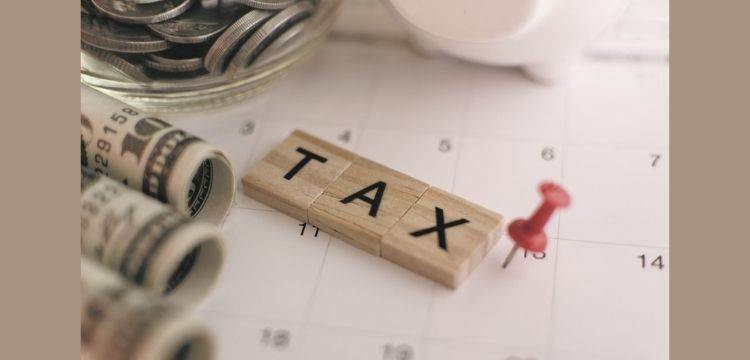
When government reduces the tax rate in the economy, disposable income with the public increases. This will increase the spending of the customers. The demand will increase because money is available in the hands of the public. As a result, the prices of goods and services increases in the economy.
• Suggested Blog: Be A Part Of Mentyor And Get Perfect Economics Assignment Help
Monetary Policy – WHAT IS MACROECONOMICS – LEARN IN 10 MINUTES
Monetary policy of a country managed by the central bank of that country. These policies are mainly to cater to the price stability in the country. Many countries use the monetary policies for inflation targeting. Monetary policy mainly covers-
Open Market Operations
Open market operations is the buying and selling of government securities. When the central bank of a country sells securities it absorbs the credit from the economy. As a result, in macroeconomics, the money in the hands of the public decreases. This helps to target inflation in an economy.
When government buys securities the credit flow in the economy increase. As a result, money supply in the economy increases. When money supply increases there is an availability of credit in the hands of the public. This influences demand in the economy.
Reserve Requirement
Reserve requirement is an important tool in macroeconomics that influence monetary policy in an economy. It is the money that a commercial bank should have with the central bank in the form of reserves. The higher the reserve requirement with the central bank the lesser will be liquidity in the banks for public dealing. This also helps in influencing the prices in the economy.
Discount Rate
Discount rate is the borrowing rate of commercial banks from the central bank. When discount rate is increased by the central bank, the commercial banks borrows less money. Therefore the lending capacity of the commercial banks reduces. When discount rate is reduced, the commercial banks borrow from the central bank. This helps in increasing the liquid assets with the commercial banks.
Conclusion – WHAT IS MACROECONOMICS – LEARN IN 10 MINUTES
Macroeconomics is a key concept of economics. In other words, it deals with the economy as a whole. The target of macroeconomics is to maintain price stability, generate economic growth and control inflation. We have seen that to maintain price stability and inflation there are various tools of macroeconomics. However, the monetary policies and fiscal policy does the work of maintaining price stability. We normally get confused between micro and macroeconomics. But through this blog, it becomes clear the objectives and importance of macroeconomics.
Read more of our blogs:

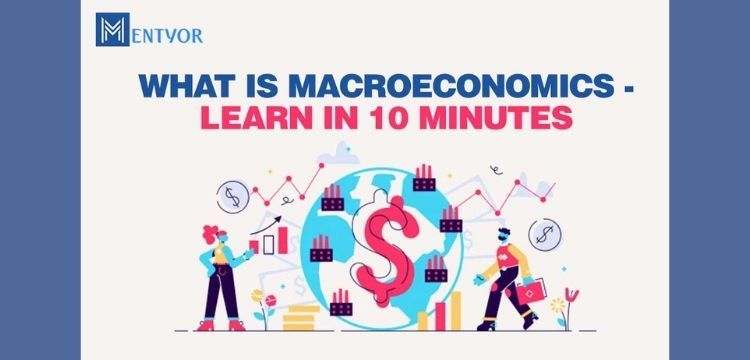
 WhatsApp
WhatsApp